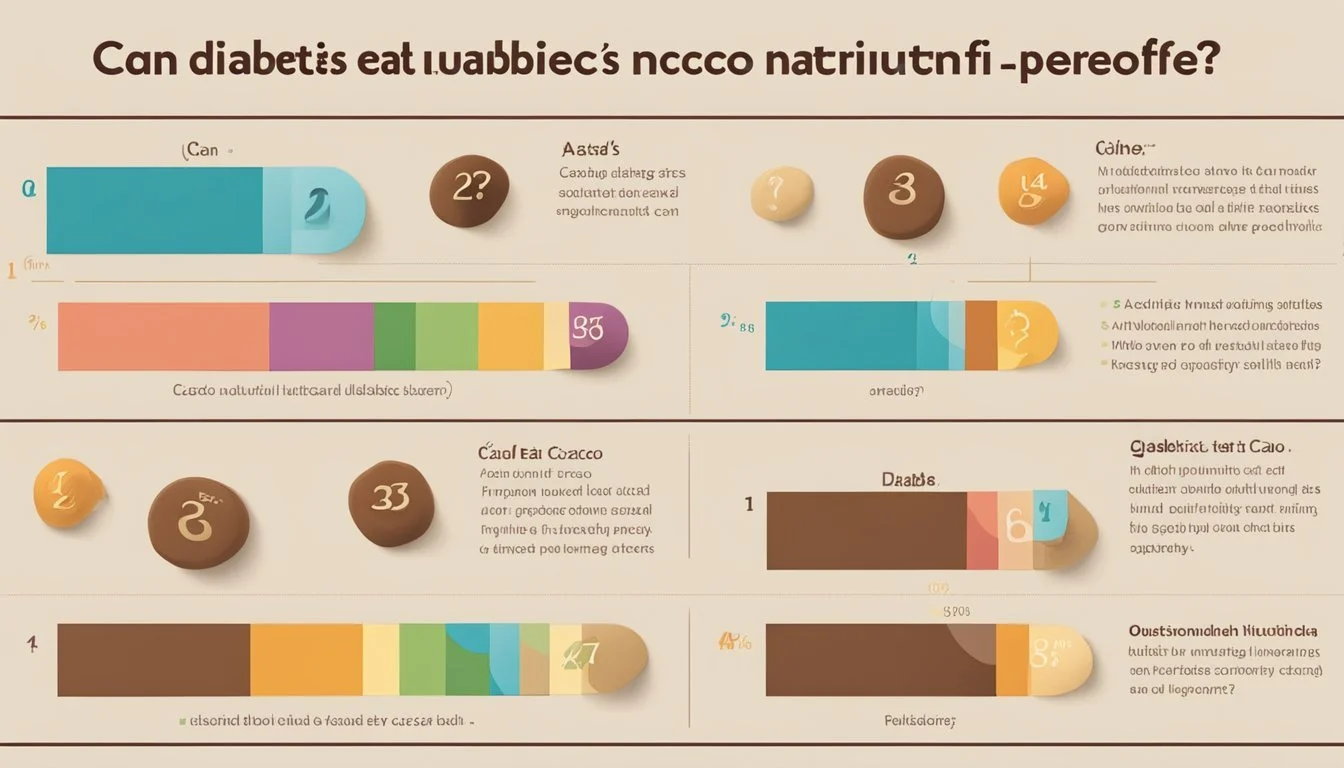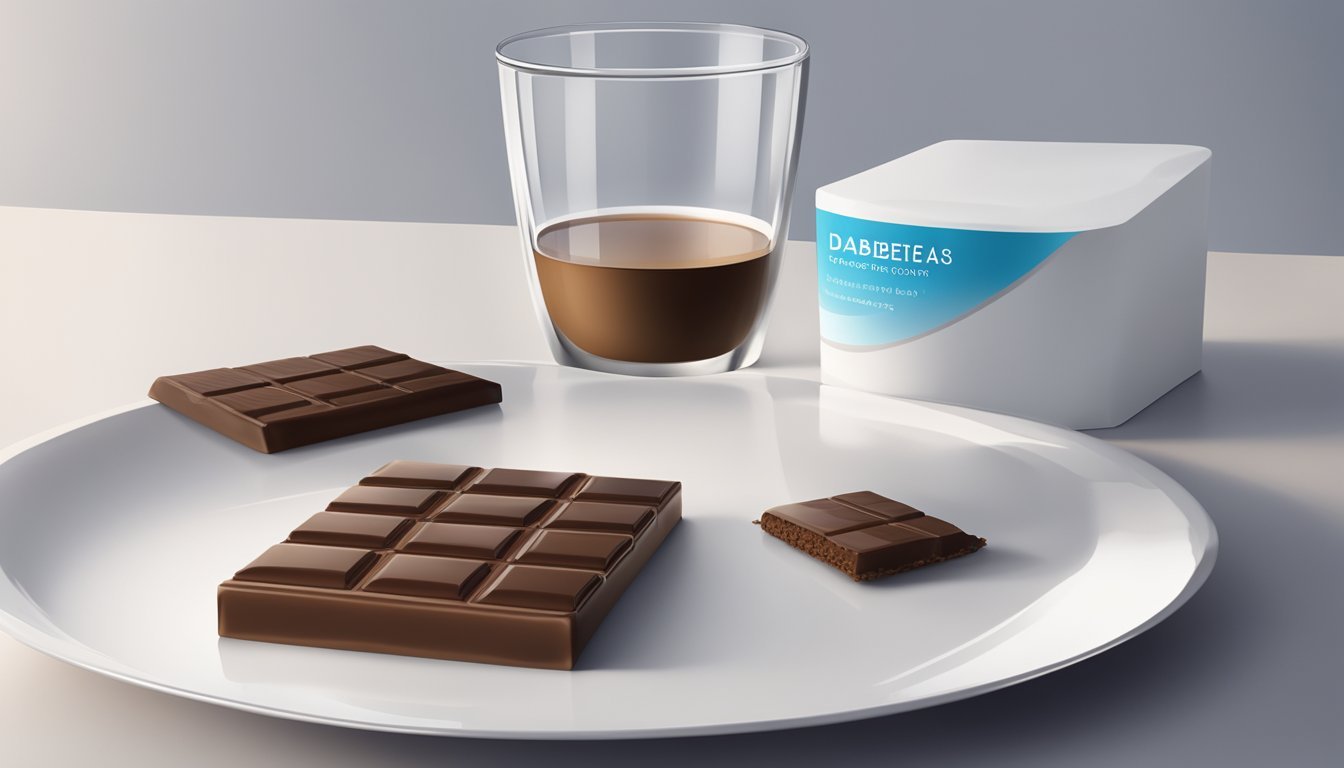Can Diabetics Eat Cacao?
Understanding Its Effects on Blood Sugar
For those managing diabetes, the question of whether cacao can fit into their diet is crucial. Cacao, particularly in its dark chocolate form, can be consumed by diabetics in moderation without adverse effects on blood sugar levels. This is because dark chocolate tends to have lower sugar content and is rich in heart-healthy nutrients.
Many people with diabetes are often advised to limit their intake of sweets to maintain stable blood sugar levels. The key, however, lies in the type and quantity of chocolate consumed. Cacao, in its purest forms like unsweetened cocoa powder or high-percentage dark chocolate, offers benefits such as minerals and fiber, which can be advantageous in a diabetic diet.
Health experts suggest that moderate consumption of dark chocolate may also help in reducing insulin resistance, making it a viable treat for those with diabetes. By selecting the right kind of chocolate and enjoying it responsibly, individuals with diabetes can savor cacao without compromising their health.
Understanding Diabetes and Diet
Diabetes management requires careful attention to diet, especially when it comes to carbohydrate intake, which can influence blood sugar levels. The types of foods consumed and their impact on insulin and glucose levels are crucial for maintaining health.
Effects of Cacao on Blood Sugar Levels
Cacao, particularly in its raw or unsweetened form, holds potential benefits for those managing diabetes. Raw cacao contains minimal sugar, making it a safer option compared to regular chocolate.
Glycemic Index: Cacao has a low glycemic index, meaning it has a slower impact on blood sugar levels.
Insulin Sensitivity: Some studies suggest that the flavonols in cacao may enhance insulin sensitivity, supporting better glucose control.
In addition, cacao is rich in minerals like magnesium, which may aid in blood sugar regulation. It is essential to consume cacao in moderation to maintain its health benefits without causing significant fluctuations in blood sugar levels.
Nutritional Profile of Cacao
Cacao is rich in nutrients that offer various health benefits. This section explores its cocoa content, macronutrient profile, and essential minerals and compounds.
Cocoa Content and Its Implications
Cacao contains cocoa solids, which are rich in several beneficial components. These components include flavonoids, polyphenols, and antioxidants. Flavonoids, specifically flavonols, are known to improve cardiovascular health and regulate blood sugar levels.
The cocoa content is measured as a percentage, indicating the amount of cocoa in the product. Higher cocoa content generally means increased levels of beneficial compounds. Cacao with at least 70% cocoa is considered high-quality, offering more health benefits.
An adequate intake of such compounds can aid in reducing oxidative stress and inflammation.
Macronutrients in Cacao
Cacao is a nutrient-dense food that includes several macronutrients. Per 100 grams, cacao contains approximately 400 calories. It provides a modest amount of fat, mostly unsaturated, which is beneficial for heart health.
Additionally, cacao is a good source of protein and dietary fiber. The protein content helps in muscle repair and growth, while dietary fiber aids in digestive health by promoting regular bowel movements.
Cacao also contains minimal sugars, making it suitable for those needing to manage blood glucose levels, such as diabetics.
Minerals and Other Beneficial Compounds in Cacao
Cacao is abundant in essential minerals such as iron, magnesium, and potassium. Iron supports the formation of red blood cells, while magnesium is crucial for muscle and nerve functions.
Another notable compound in cacao is theobromine, a stimulant similar to caffeine but milder. Theobromine can enhance mood and provide a sense of alertness without the jittery effects of caffeine.
The polyphenolic content in cacao contributes significantly to its antioxidant capacity, which helps protect cells from damage. Cocoa flavanols have also been studied for their role in improving blood vessel function and reducing the risk of cardiovascular diseases.
Cacao Consumption and Cardiovascular Health
Cacao consumption has been linked to several cardiovascular benefits. Key areas of impact include cholesterol levels and heart disease.
Impact of Cacao on Cholesterol and Heart Disease
Cacao is rich in flavonoids, compounds known to improve heart health. Research suggests these flavonoids help reduce LDL cholesterol (bad cholesterol) while increasing HDL cholesterol (good cholesterol). This balance is crucial for preventing heart disease.
Additionally, flavonoids in cacao enhance the production of nitric oxide. This compound improves endothelial function by relaxing blood vessels, which lowers blood pressure and supports healthy blood flow.
The European Food Safety Authority (EFSA) acknowledges that a daily intake of 200 mg of cocoa flavanols can maintain normal blood pressure. This highlights the potential of cacao in a heart-healthy diet, particularly in maintaining heart health and managing blood pressure.
Types of Chocolate and Their Suitability for Diabetics
Different types of chocolate have varying impacts on blood sugar levels, which is crucial information for diabetics. Key considerations include cocoa content, sugar, and fat levels.
Comparing Dark, Milk, and White Chocolate
Dark Chocolate contains higher cocoa content, often exceeding 70%. It includes more fiber, antioxidants, and lesser amounts of sugar. The high cocoa content helps manage blood sugar effectively when consumed in moderation. It also provides micronutrients like iron and magnesium.
Milk Chocolate has lower cocoa content, usually between 10-50%. It tends to have more added sugar and milk solids, making it less suitable for diabetics. The presence of dairy increases carbohydrate levels, potentially impacting blood sugar more severely.
White Chocolate lacks cocoa solids entirely, consisting mainly of cocoa butter, sugar, and milk. Its high sugar content and low nutritional value make it the least favorable option for diabetics. It offers negligible benefits due to the absence of cocoa compounds that might aid in blood sugar management.
Sugar and Fat Content Across Chocolate Varieties
Dark Chocolate typically contains around 15-20g of carbohydrates per 28g serving, with a significant portion being fiber. It also includes healthy fats from cocoa butter, which are partly unsaturated. This balance helps maintain steady blood sugar levels.
Milk Chocolate often consists of about 20-25g of carbohydrates per 28g serving, mainly sugar. It also has higher saturated fat content due to added milk and sugar. This combination can lead to higher blood glucose spikes, making it less ideal for diabetics.
White Chocolate is primarily made up of sugar, providing around 20-30g of carbohydrates per 28g serving. It contains significant amounts of saturated fat with minimal nutritional benefits. The high sugar and fat content can adversely affect blood glucose control, making it unsuitable for those managing diabetes.
Managing Cacao Intake in a Diabetic Diet
Consuming cacao can be beneficial for individuals with diabetes if done carefully. It is essential to manage portion sizes, choose the right products, and incorporate them into a balanced diet.
Safe Cacao Consumption Practices
People with diabetes should consume cacao in moderation. A balanced approach involves limiting portion sizes to avoid excessive sugar and carbohydrate intake. It's vital to read nutrition labels to check for added sugars and unhealthy fats.
Consulting a diabetes care and education specialist can provide personalized advice. They can help determine the right amounts based on an individual's nutritional needs and diabetes medications.
Opting for dark chocolate with at least 70% cacao content reduces sugar intake while benefiting from its flavonoids, which may help lower blood sugar levels.
Incorporating Cacao into a Balanced Diet
Incorporating cacao into a balanced diet involves pairing it with healthy foods like vegetables and fruits. For instance, a small piece of dark chocolate can be part of a dessert rich in fiber, such as a fruit salad.
Combining cacao with low-glycemic foods can help manage blood sugar levels.
Tracking carbohydrate intake is crucial. Using tools like a food diary or mobile apps can help maintain a balanced diet. Additionally, choosing cacao products made with sugar substitutes like stevia or erythritol can be a smart choice.
Alternatives and Substitutes to High-Sugar Cacao Products
For diabetics, substituting high-sugar cacao products is important. Opt for sugar-free options or those made with natural sweeteners.
Products containing stevia or erythritol can satisfy cravings without spiking blood sugar levels. DIY recipes, like making homemade cacao treats, allow control over ingredients and sugar content.
Seeking guidance from a diabetes care and education specialist can aid in finding suitable alternatives. Experimenting with various cacao products and brands also helps identify the best options that align with a healthy lifestyle and diabetes management goals.
Interaction with Diabetes Medications and Chronic Conditions
When considering cacao intake for diabetics, it is crucial to examine its interaction with diabetes medications and its impact on other chronic conditions related to diabetes.
Navigating Cacao Intake with Medication
Cacao contains flavonoids that can impact insulin sensitivity and blood glucose levels. For diabetics taking hypoglycemic drugs, it’s essential to monitor blood sugar levels closely when consuming cacao to avoid hypoglycemia.
Certain medications, such as metformin or insulin, may interact differently with cacao. Metformin might enhance the beneficial effects of cacao on glucose metabolism, while insulin users should be cautious as cacao might cause an unexpected drop in blood sugar levels. Patients are advised to consult their healthcare provider before incorporating significant amounts of cacao into their diet.
Cacao and Other Health Conditions Related to Diabetes
Diabetics often have other chronic conditions such as kidney disease or cardiovascular issues. Consuming cacao, rich in antioxidants, can provide health benefits like improved heart health by reducing oxidative stress and enhancing blood vessel function.
For those with kidney disease, moderation is key, as cacao contains substances that can impact kidney function. Additionally, the risk of weight gain from the calorie content in cacao products should be considered, stressing the importance of choosing products with low sugar content to prevent exacerbating hyperglycaemia.
Careful management of cacao intake can help maximize its benefits while minimizing risks associated with other chronic conditions influenced by diabetes.
Recommendations from Health Experts
People with diabetes can eat cacao in moderation. Health experts provide specific guidelines to help manage blood glucose levels effectively while including cacao in a healthy eating plan.
Guidelines from Registered Dietitians
Registered dietitians emphasize the importance of portion control. A small serving of dark chocolate with at least 70% cacao may be included in a diabetic diet.
Dark chocolate contains flavonols that can help lower blood sugar and improve insulin sensitivity. It's advised to check the nutritional label for added sugars and to choose products with lower sugar content. Monitoring blood glucose levels after consuming cacao can help determine individual tolerance.
Tips from Dietitians:
Opt for dark chocolate with high cacao content.
Limit the portion to one ounce per day.
Integrate cacao into a balanced meal plan.
Advice from Diabetes Care and Education Specialists
Diabetes care and education specialists recommend selecting cacao products that align with an overall healthy eating plan. They highlight that dark chocolate, rich in minerals like magnesium and zinc, can be a healthier choice compared to milk or white chocolate.
Consuming cacao should be done in conjunction with regular blood sugar monitoring to avoid spikes in insulin levels. The American Diabetes Association advises incorporating nutrient-rich foods and keeping treats like cacao for occasional indulgences.
Advice Summary:
Prefer dark chocolate over other varieties.
Monitor blood glucose levels regularly.
Include cacao as part of a balanced diet.
Additional Considerations for Cacao Consumption
Cacao offers both potential benefits and challenges for individuals with diabetes. Understanding its effects on energy and mood, as well as the role of advertising and personal experiences, can help guide informed choices.
Understanding Cacao's Role in Energy and Mood
Cacao contains theobromine, a compound similar to caffeine. This can lead to enhanced energy levels and a boosted mood. Small amounts of cacao can improve alertness and motivation, making it a relevant choice for many.
In addition to theobromine, cacao also includes compounds like polyphenols. These have been linked to improved mental performance and reduced stress. For diabetics, moderate cacao consumption might support cognitive function without causing significant blood sugar spikes.
Understanding how one's body reacts to cacao is key. It's important to monitor energy and mood changes to avoid any adverse effects related to overstimulation or other sensitivities.
Impact of Advertising and Personal Experience
Advertising often highlights the positive aspects of cacao, such as its antioxidant properties or its ability to enhance mood. However, personal experiences can vary greatly. While adverts may emphasize health benefits, diabetics must consider individual reactions and long-term impacts.
It's common for marketing to overlook the sugar content in many cacao products. Diabetics need to scrutinize labels to distinguish between pure cacao and high-sugar chocolate. Personal experience plays a crucial role here, as individual responses to cacao can differ.
Interaction with cacao may be influenced by regional availability and cultural practices. Those in regions with a history of cacao consumption may find it easier to source better-quality, unsweetened cacao products that are beneficial for blood sugar management.








